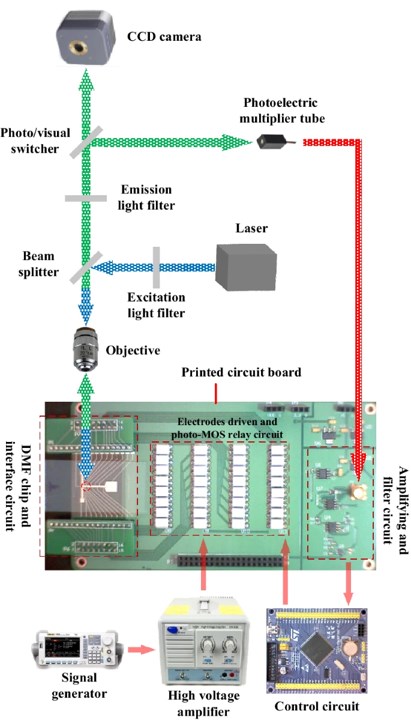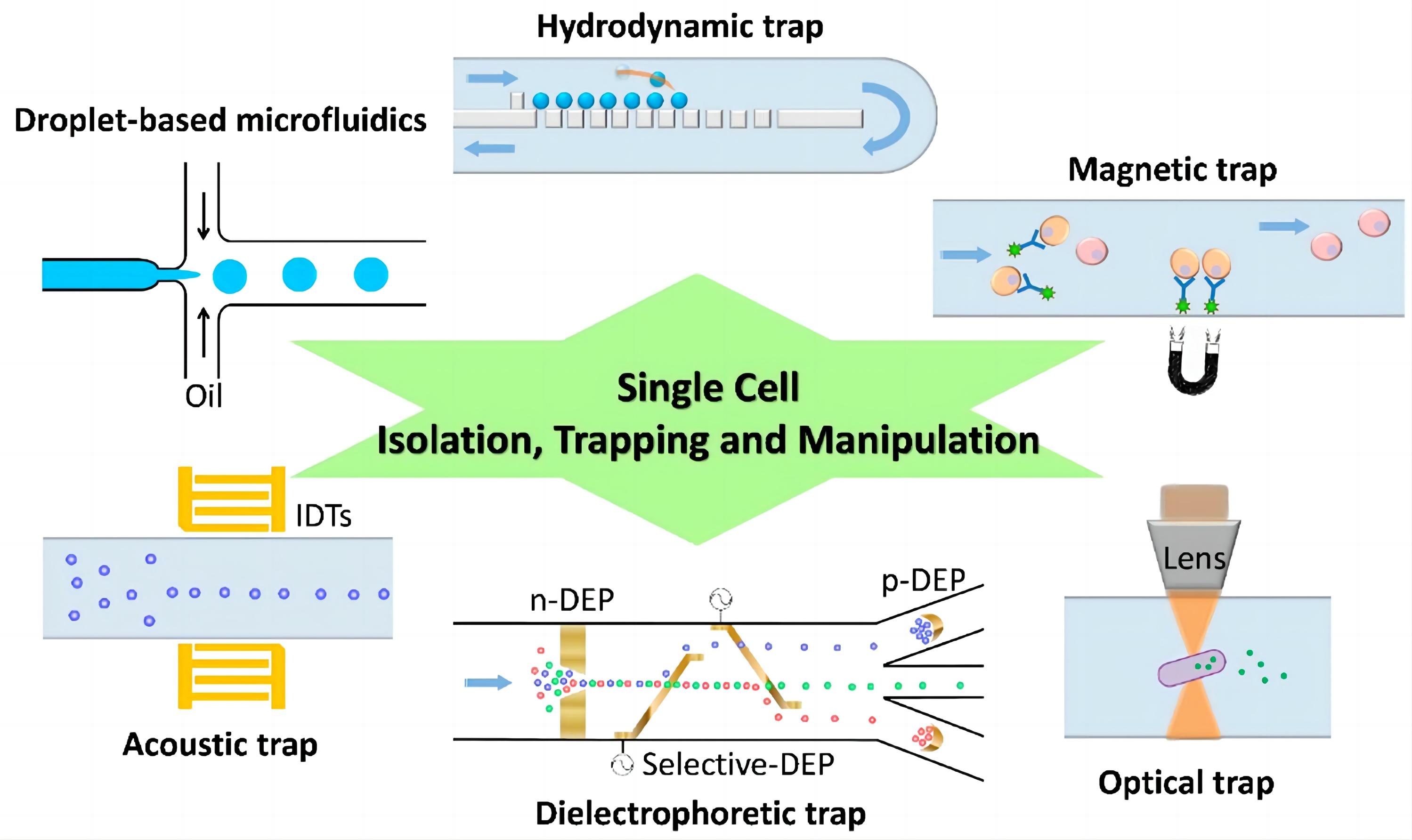Fluorescence detection is the most widely used optical method for microsensing systems, due to its superior sensitivity and selectivity. Although a variety of excitation sources are available, laser-induced fluorescence is most easily adapted to the dimensions of microchips. The coherence and low divergence of a laser beam makes it easy to focus on very small detection volumes and to obtain very high irradiation, resulting in one of the lowest detection limits of any detection system.
Fluorescence Detection in Digital Microfluidic System
Fluorescent droplet sorting has great research value in biology researches. However, channel-based Microfluidics are limited by the fact that particles might adhere to the walls of channel to cause blocking and failure of device. Moreover, it is difficult to isolate and separate a specific droplet inside fluid channels. On the other hand, digital Microfluidic (DMF) manipulates individual droplets by electric actuation and thus has the advantage of maximum flexibility and natural labeling of each droplet. In DMF, it is not only easy to locate and separate a target droplet, but it is also capable of realizing complex fluid operations.
 Fig.1 Diagram of the DMF droplet sorting system architecture.1, 3
Fig.1 Diagram of the DMF droplet sorting system architecture.1, 3
Multiple Bio-samples Detection in Microfluidic Systems
Biological detections often require the labeling of bio-samples with multiple fluorophores for correlation analysis to the properties of the labeled objects. However, it is difficult to find fluorescent dyes that have similar excitation wavelength but have separated emission spectra. It is impossible to quantify multiple fluorescence parameters using a single excitation wavelength source. Thus, the methods for simultaneously detecting multiple lanes, multiple wavelengths and multiple sensing parameters were developed to realize multiple bio-samples detection and increase the throughput of biosensing in Microfluidic systems.
Multicolor Fluorescence Detection-Based Microfluidic Device for Single-Cell Metabolomics Analysis
Though microchip electrophoresis with laser-induced fluorescence detection (MCE-LIFD) is a powerful tool to detect metabolites at the single-cell level, the existing one-laser excitation and one-color fluorescence collection in MCE-LIFD is not sufficient for the simultaneous detection of multiple small molecules with wide variations in their fluorescence excitation and emission spectra. Scientist developed a multicolor fluorescence detection-based Microfluidic device (MFD-MD) for single-cell metabolomics research. The multicolor fluorescence detection system permitted simultaneous analysis of different small-molecule metabolites (H2O2, GSH, and Cys). The MFD-MD provides a new opportunity for simultaneous single-cell analysis of multiple metabolites.
 Fig.2 Microfluidic-based single-cell metabolomics analysis.2, 3
Fig.2 Microfluidic-based single-cell metabolomics analysis.2, 3
In the future, the fluorescence detection system will be easier to implement automation and realizes the intelligent sample processing. For services or products, please directly contact us and consult our technical supports online.
References
- Wang, Xingbo, et al. "Driving and sorting of the fluorescent droplets on digital microfluidic platform." Microfluidics and Nanofluidics 22 (2018): 1-7.
- Lo, Shih-Jie, and Da-Jeng Yao. "Get to understand more from single-cells: Current studies of microfluidic-based techniques for single-cell analysis." International journal of molecular sciences 16.8 (2015): 16763-16777.
- Distributed under Open Access license CC BY 4.0, without modification.
For Research Use Only.

